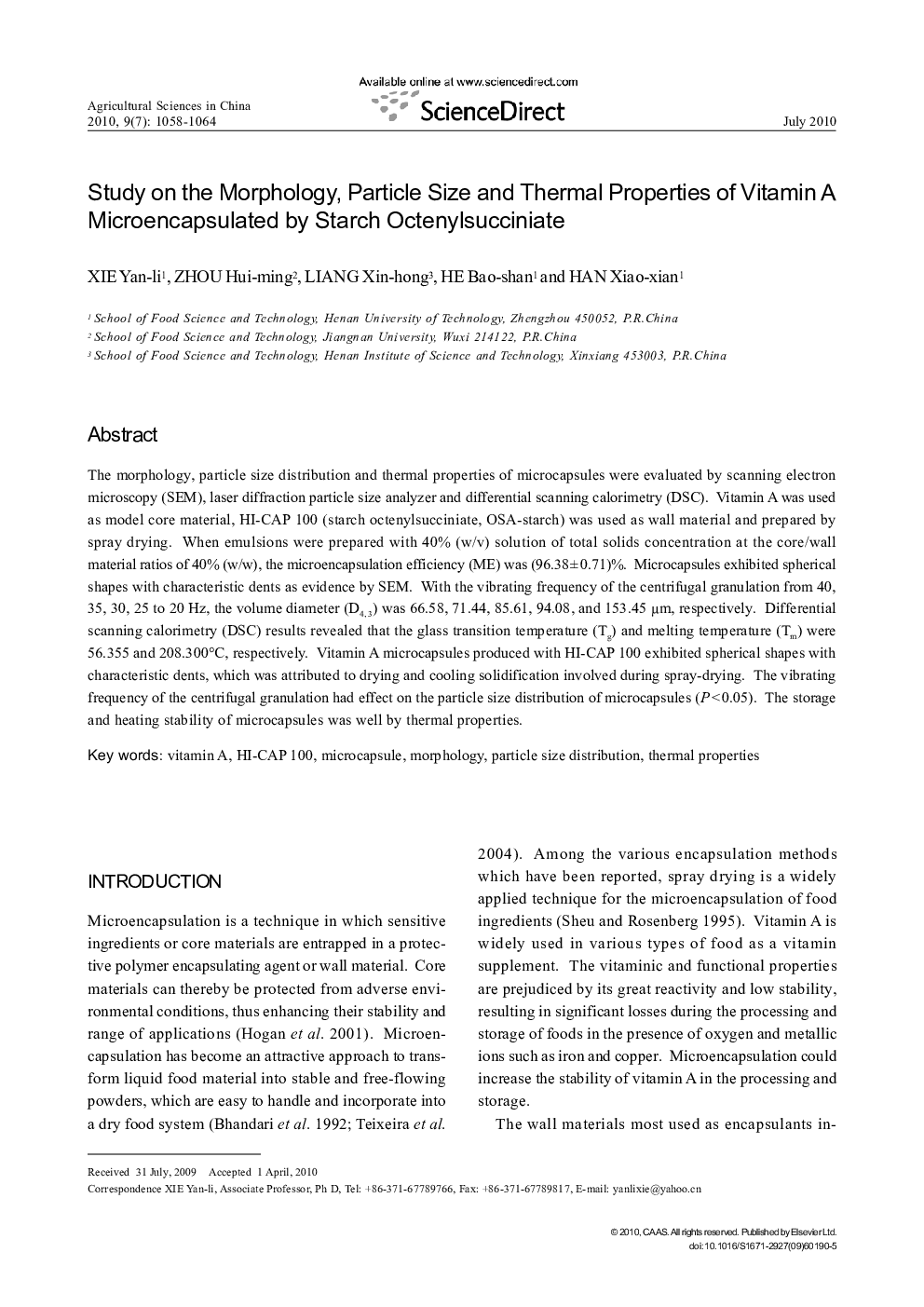| Article ID | Journal | Published Year | Pages | File Type |
|---|---|---|---|---|
| 4490116 | Agricultural Sciences in China | 2010 | 7 Pages |
The morphology, particle size distribution and thermal properties of microcapsules were evaluated by scanning electron microscopy (SEM), laser diffraction particle size analyzer and differential scanning calorimetry (DSC). Vitamin A was used as model core material, HI-CAP 100 (starch octenylsucciniate, OSA-starch) was used as wall material and prepared by spray drying. When emulsions were prepared with 40% (w/v) solution of total solids concentration at the core/wall material ratios of 40% (w/w), the microencapsulation efficiency (ME) was (96.38± 0.71)%. Microcapsules exhibited spherical shapes with characteristic dents as evidence by SEM. With the vibrating frequency of the centrifugal granulation from 40, 35, 30, 25 to 20 Hz, the volume diameter (D4, 3) was 66.58, 71.44, 85.61, 94.08, and 153.45 μm, respectively. Differential scanning calorimetry (DSC) results revealed that the glass transition temperature (Tg) and melting temperature (Tm) were 56.355 and 208.300°C, respectively. Vitamin A microcapsules produced with HI-CAP 100 exhibited spherical shapes with characteristic dents, which was attributed to drying and cooling solidification involved during spray-drying. The vibrating frequency of the centrifugal granulation had effect on the particle size distribution of microcapsules (P < 0.05). The storage and heating stability of microcapsules was well by thermal properties.
